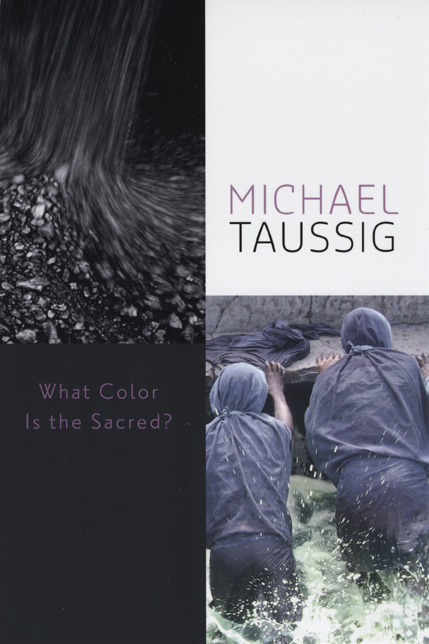Academia and the Wild Man
 Michael Taussig is no stranger to attention from the New York press. A 2001 profile of the rogue Columbia anthropologist in the New York Times art section began:
Michael Taussig is no stranger to attention from the New York press. A 2001 profile of the rogue Columbia anthropologist in the New York Times art section began:
Among students at Columbia University, Michael Taussig has a glamorous reputation. An anthropologist who specializes in South America, he has hung out with shamans and tripped on yagé, a potent hallucinogen, dozens of times. He keeps an enormous rainbow-colored hammock in his campus office. And his lectures are famous for their dramatic flourishes; he once gave a talk with his head in a paper bag (a homage to a Dadaist artist). Not surprisingly, his classes are always filled to capacity. “He’s like a rock star,” said one graduate student in anthropology. “He’s the professor that all the students think is cool.”
And late last year, Taussig was among the few academics/fashion models featured in the Times magazine’s feature “The Class Acts.”
Now, with a new book just out, he is once again the talk of the town. Literally. The May 18 issue of The New Yorker features a short piece in the Talk of the Town on Taussig’s graduate seminar on the apocalypse (official title: “Preëmptive Apocalyptic Thought: The Angel of History Reconsidered in Light of Climate Change, the War on Terror, and Financial Meltdown”). Says writer Julia Ioffe:
Taussig, who is the author of such texts as My Cocaine Museum and What Color Is the Sacred?, is the foremost practitioner of a technique called “fictocriticism,” which the Times has called “gonzo anthropology. ” Trained as a physician in Australia, Taussig discovered his calling in the jungles of Colombia, where he travelled in 1969, inspired by the struggles of Marxist guerrillas. (He also discovered there the hallucinogenic properties of yagé.) He is tall, with steel-gray hair, and he had on a jungle-print shirt and linen pants.
So who is the man behind the wardrobe and the hallucinogens? He’s a Chicago author, naturally. He’s published many books with the Press—including an examination of the Indian shaman as Wild Man, a literary memorial to Walter Benjamin, and a diary of terror in Colombia—and his latest continues to concern itself with connections between ideas, thinkers, and things.
Following his interest in magic and surrealism, his earlier work on mimesis, and his recent discussion of heat, gold, and cocaine in My Cocaine Museum, What Color Is the Sacred? uses color to explore further dimensions of what Taussig calls “the bodily unconscious” in an age of global warming. Drawing on classic ethnography as well as the work of Benjamin, Burroughs, and Proust, he takes up the notion that color invites the viewer into images and into the world. Yet, as Taussig makes clear, color has a history—a manifestly colonial history rooted in the West’s discomfort with color, especially bright color, and its associations with the so-called primitive.
He begins by noting Goethe’s belief that Europeans are physically averse to vivid color while the uncivilized revel in it, which prompts Taussig to reconsider colonialism as a tension between chromophobes and chromophiliacs. And he ends with the strange story of coal, which, he argues, displaced colonial color by giving birth to synthetic colors, organic chemistry, and IG Farben, the giant chemical corporation behind the Third Reich. Nietzsche once wrote, “So far, all that has given colour to existence still lacks a history.” With What Color Is the Sacred? Taussig has taken up that challenge with all the radiant intelligence and inspiration we’ve come to expect from him.
Read an excerpt from What Color Is the Sacred?